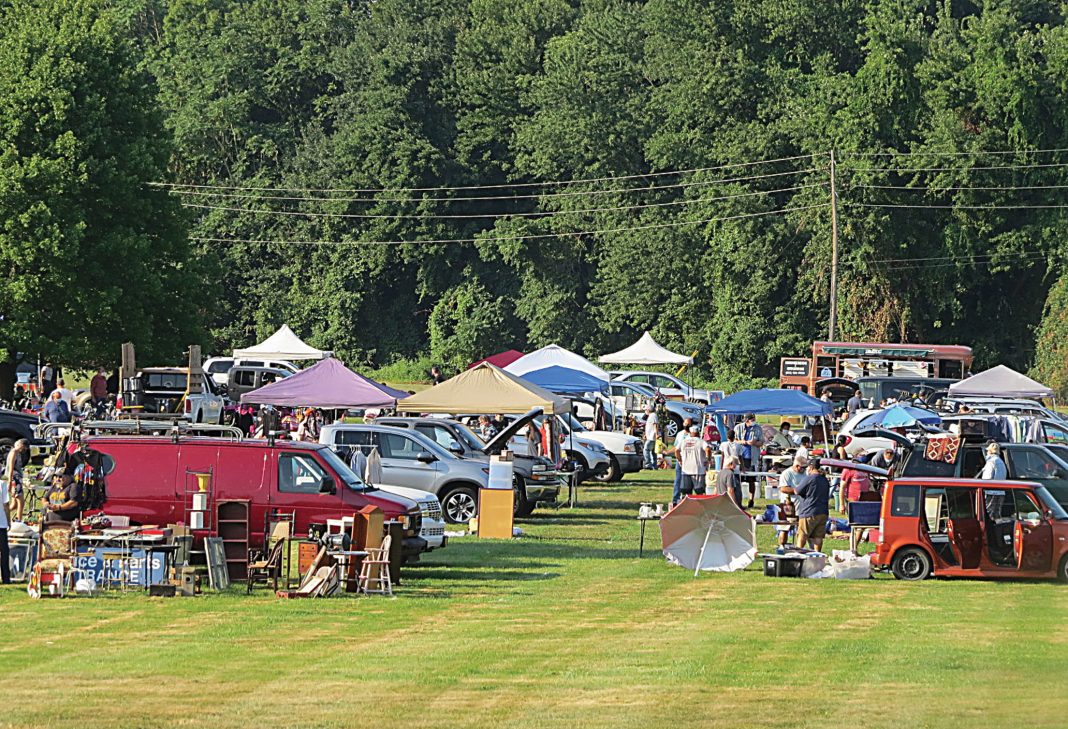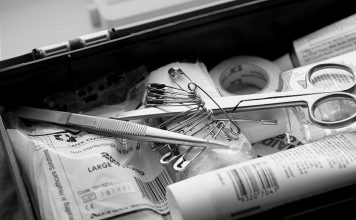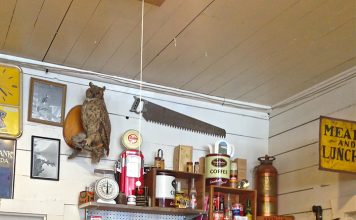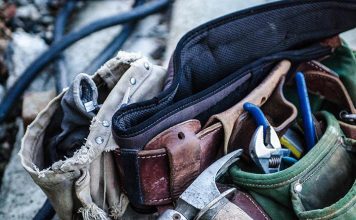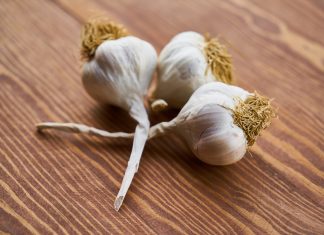By Jim Capossela
I’m convinced it’s clean living that’s helped me make it to the age 39 I’ve been for quite some time now. I don’t drink, smoke, or do drugs and I normally take my pizza with fewer than three toppings. But I am addicted to two things: coffee and fleamarketing. One gets in my blood literally and the other figuratively. In either case, once it’s there it isn’t easily gotten out.
I started with yard sales, several dozen of them, following the death of a few family members who left behind a lot of things that were dear to them and that I therefore intended to treat with respect. In fact, I can’t throw anything out that’s useful — it’s a family trait. But the yard sales I started with weren’t enough; simply put, not enough people came even though I plastered the nearby streets with big colorful signs. In doing those neighborhood gigs I learned that prying a dollar out of someone is such good fun that eventually I needed to make it five dollars, then ten, especially if the stuff was only worth four or nine.
If you thought marriage was a roller coaster, try setting up at a big flea market. The only thing I can tell you with certainty is that, like all salesmen and women, you’ll take that jostling ride with the exhilaration of a sale at the top end and the disappointment of a no-sale at the bottom. It isn’t for everyone. You’ll know soon enough if it is or isn’t. Thick skin might be a good foundational trait.
I can offer a lot of good tips on what to sell, what not to sell, and how to go about making it worthwhile. It’s mostly about the merchandise.
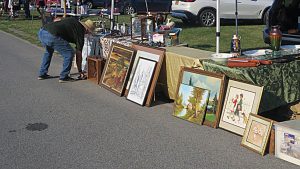
I’ve never had much luck with artwork. Perhaps you have to specialize in it. If it looks old or just has an antiquey look it has a better chance.
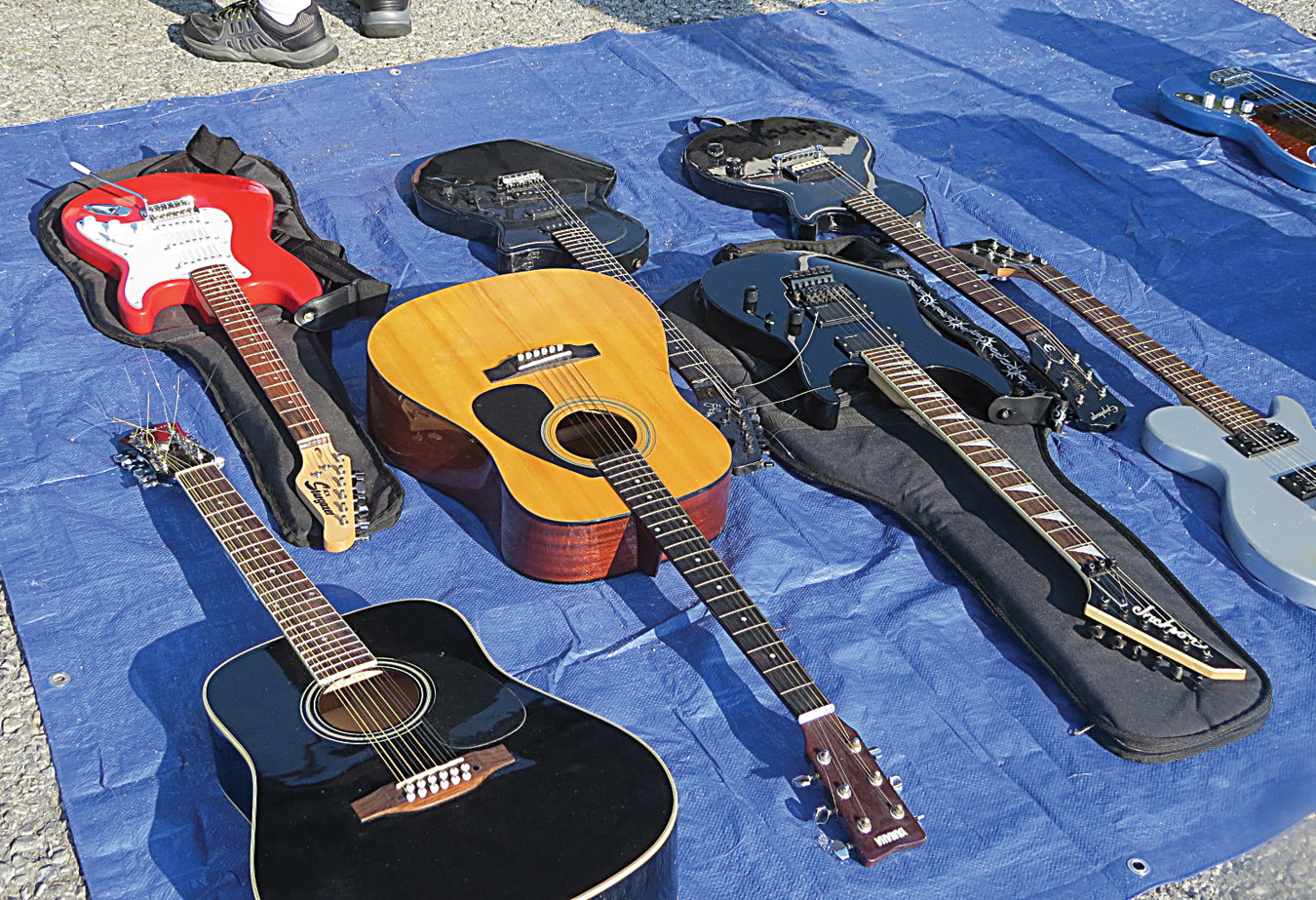
Musical instruments will move, but you have to hope the right people show up. Because this is such a specialty, bringing only musical instruments might be perilous unless you have really good ones that are highly desirable.
A large well-established flea market will bring in hundreds and sometimes thousands of people on a fair-weather day. A great many run Saturday or Sunday and sometimes both. Others are periodic — say, three or four times a year. In the sun belt they run year-round. Farther north, they may shut down during the winter. (Some charge as little as $25 for a table space. Bigger ones may get $100 to $200 for a two-day show.) The diversity of items sought is as diverse as human nature itself. Let’s break down the merchandise into four categories: household goods, craft items, antiques and collectibles, and food. I have some very definite views on all four.
You can easily tell the inexperienced seller at a big market. He or she may have done a few yard sales and, like me, was whetted for something bigger. This individual will likely have a lot of precious little items all neatly labeled as to ten cents, twenty-five cents, and so on. What enthusiasm she’ll radiate! That brings us to the first category, household goods, but I must divide that category into two parts.
Ordinary home goods are extremely hard to sell because there is so much of it out there. And for that same reason, they don’t fetch much. Further, they’re difficult to pack and repack and are highly prone to breakage. I look at all this stuff as cleaning-out-the-house items. It’s fine to sell these goods as long as you keep your expectations very low. You’ll likely make some beer money though you might not be buying any fancy wines with what you pocket. I include here dishware, glassware, picture frames, holiday decorations, coffee mugs, books, all the gift items you ever got for Christmas and really didn’t want, figurines, all framed pictures that aren’t by a well-known artist, virtually all small plastic items, almost all electronics, cookie tins, keepsake boxes, bags and suitcases, most used sports equipment, common hand tools, domestic items like curtains and tablecloths, and so on. You will also find any items which, in the perception of the buyer, may or may not work (like vacuum cleaners).
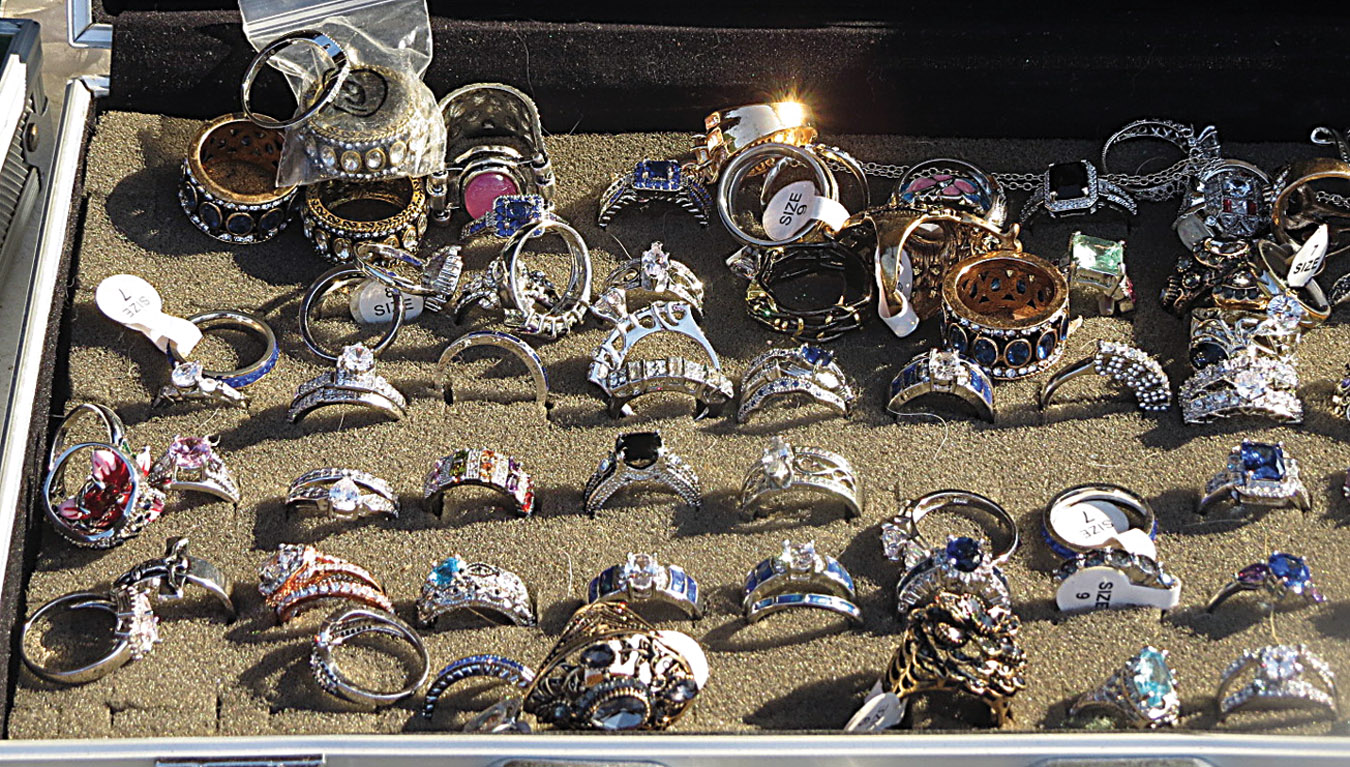
Even though there is a lot of jewelry at flea markets, it’s an upbeat item. I think this is another type of item where strong knowledge of the category — and a feel for what women want — is essential.
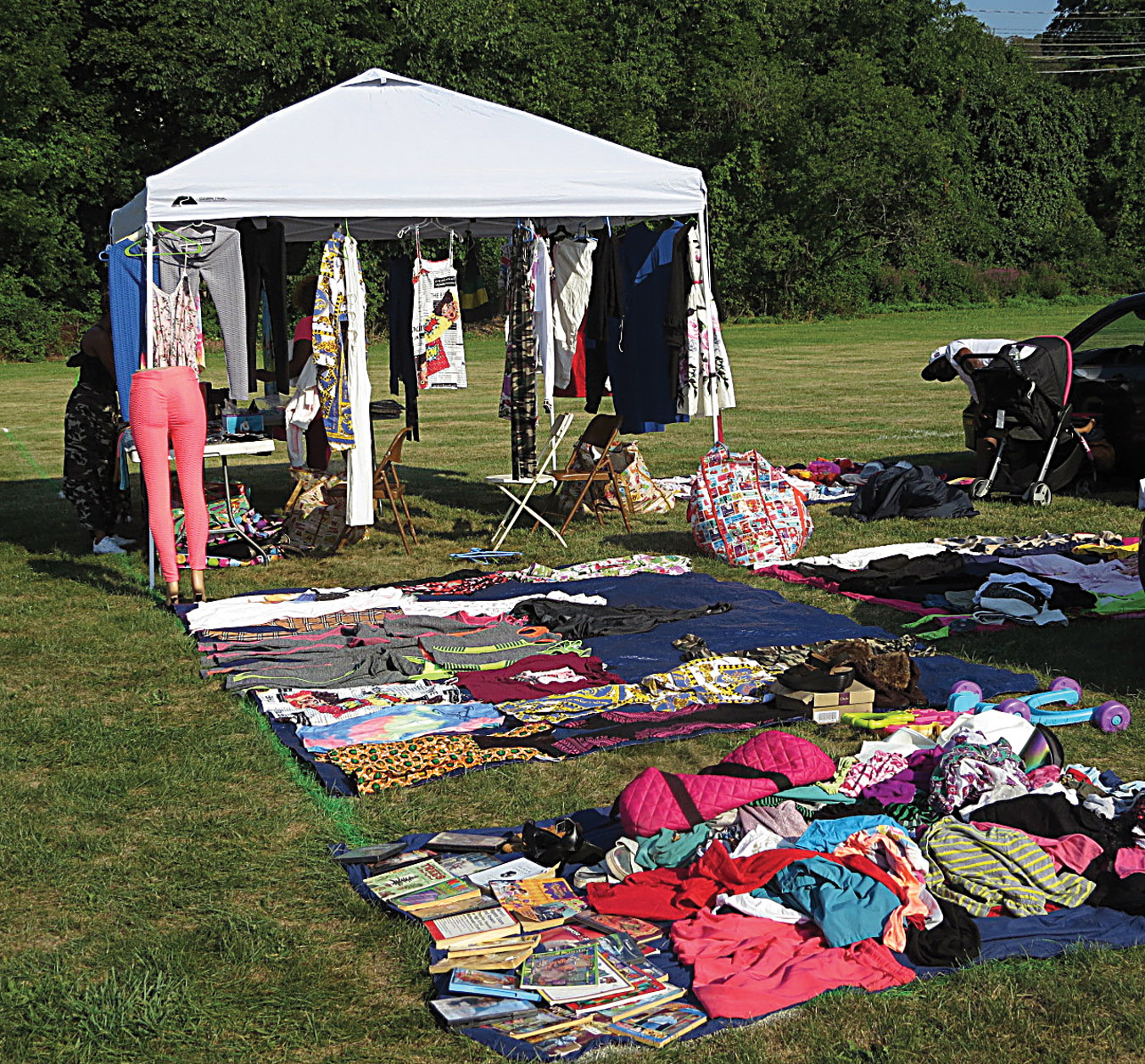
Canopies (background) are heavy to move, cumbersome to set up, and troublesome as soon as it gets windy. On the plus side, they offer protection from the sun and any passing shower. They may also look more professional. This seller also spread out a tarp.
Now comes the other side of household goods. Let’s call these, for lack of a better description, genuinely useful things. I include here musical instruments, better quality hand tools, both hand-held and stationary power tools, lawnmowers and snowblowers, chain saws, sometimes a desirable piece of furniture, bicycles, and both new and used clothing. These items move. While you won’t get anything close to the new retail price, they will at least attract a lot of interest. Here’s an important concept: with these kinds of items, it’s most effective to have a bunch of them. For example, certain handy sellers I know scrounge up used bicycles or lawnmowers (mostly from the curb), fix them up, and put out a truck load of them at a sale. They might sell only that one kind of item. I’ve seen these sellers do quite well. In a similar vein, the only person I’ve seen doing well with books sells only books. He brings several hundred. Regular buyers come looking for them each week.
The next category is hand crafts. I think the best advice I can give on these items is: go to a high-quality craft show or sell online instead. Hand crafted items, no matter how beautiful, are very hard to sell at most flea markets. It took you time to make that item. Time is money. You have a personal attachment to your work. Most buyers at most flea markets are looking for really steep discounts. Adding up these several realities does not lead to a favorable outlook for hand crafts. I don’t know how many times I’ve seen a craftsperson show up at a recurring market, once only, never to reappear. Some made very nice paintings, others pottery, still others made items crafted from wood. With the one exception of jewelry, both handmade and manufactured (the selling of which I have a favorable view of), you just can’t get the price you need for these labor-of-love creations. You’re apt to make four dollars an hour. Try craft shows or street fairs in upscale neighborhoods. If you remain unconvinced, try to sell some kind of crafted item people haven’t seen before. That allows me to make a key point applicable across the spectrum of flea market merchandise: items never seen or scarcely seen can be big winners. Keep the word “novelty” uppermost in your mind.
Antiques are often thought of as being a hundred years old or older. Honestly, a lot that’s being sold at antique stores is really not that old. The same can be said for antique tables at a flea market. For this discussion, I’ll lump all these items under the banner of “collectibles.”
The professionals who flea market as their main living, or a significant part of it, are usually merchants in this category of goods. A fair number of these experienced hands also have shops; some only buy at flea markets to stock their shops. If you sell regularly at a show, you’ll see these same individuals week after week. All will drive a hard bargain, but almost all are nice people. Some have gotten to be friends of mine. They’ll even watch my table when I have to go to the bathroom.
People like old stuff. I’m not sure what tiny portion of the brain is activated by nostalgia, but I know it has a mesmerizing effect on most people. Maybe it’s just human nature to go around believing that the past was always better whether the hard evidence supports that or not. In any case, interesting old items (especially old wood and old metal) will always attract both other serious dealers and a significant percentage of flea market visitors who like (and sometimes collect) old things.
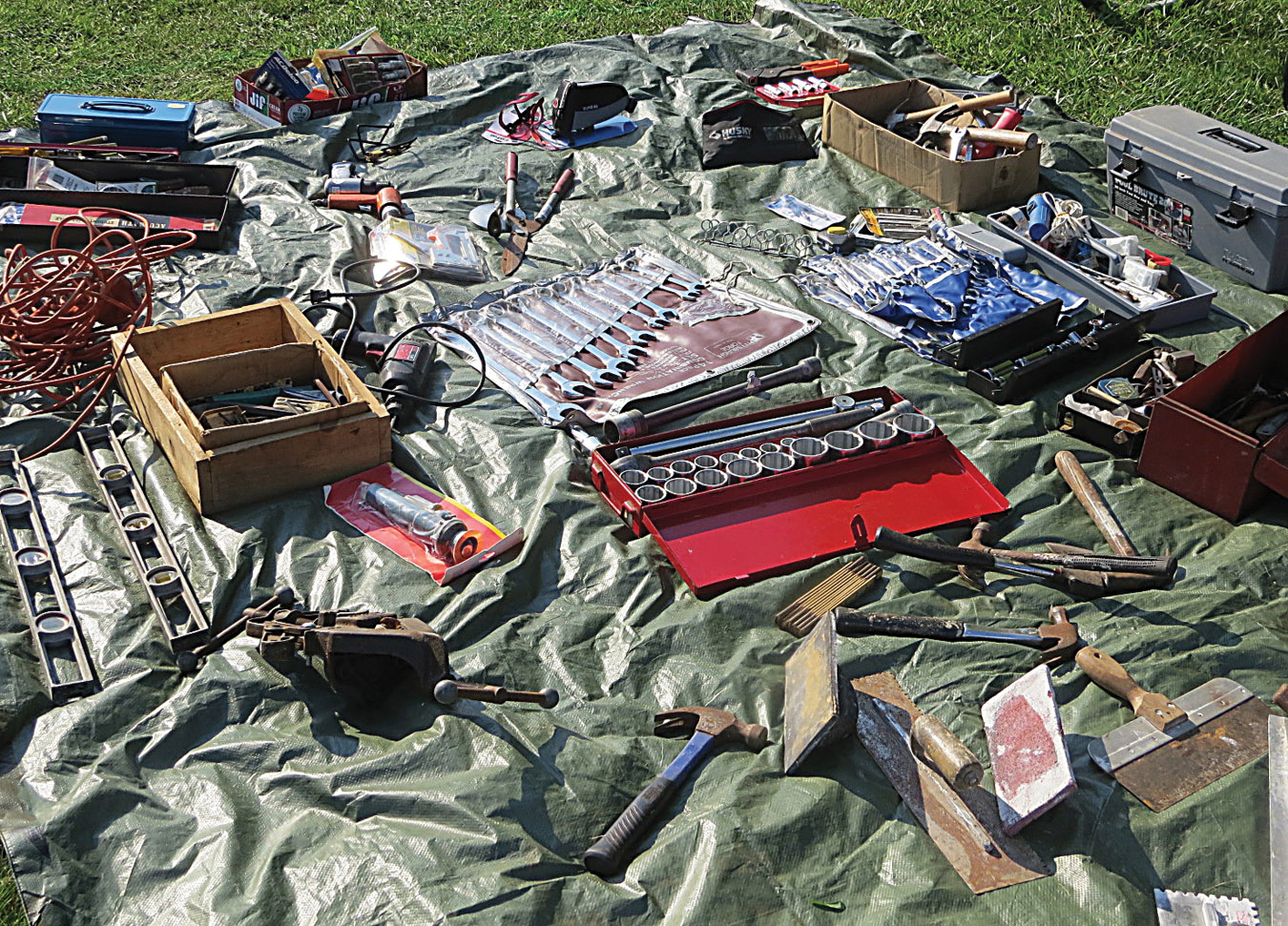
You’ll see contemporary (not too old) tools at every flea market. They’re modest sellers. Small power tools move better than hand tools.
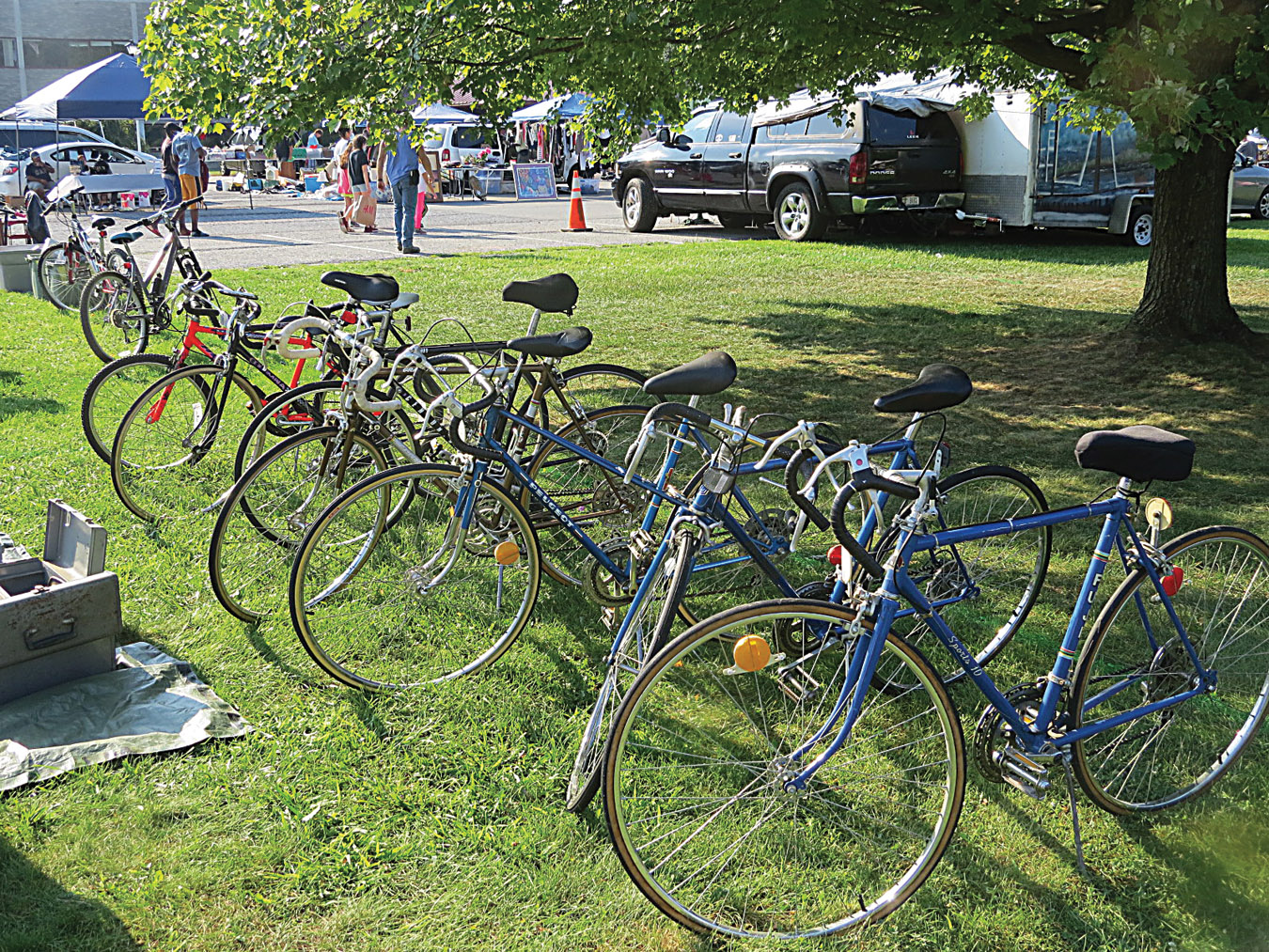
Bicycles will sell but you greatly increase your chances if you bring a bunch of them. This principle applies to many kinds of items.
Then it really comes down to price. There isn’t room here for even a brief exploration of that subject but there is a good way to get a handle on values: go to a few flea markets and walk around keeping your ears open.
I’ll name just a few collectibles that consistently attract attention.
Old farm implements press a lot of the right buttons. So do old tools. Old signs, like Coca Cola signs or Esso Oil signs, are sought after so much that even reproductions of these sell pretty well. In fact, it’s one of the items I peddle and it prompts a little story.
At one of the largest and best-known markets here in southern New York, I set up one morning mostly with antique fishing lures. Opposite me was a young guy, maybe 30, who had a pick-up full of clever reproductions. He had statues of famous real statues and Greek-looking bronzes. They were all phoney but very convincing. He was incredibly busy all day leaving the rest of us scratching our heads. I found out that there was no deceit on his part. He was telling the customers that these were all reproductions. They ate them up anyway. At the end of the day he told me he did $5,000 worth of business, the most I’ve ever heard reported at a flea market. It turned out that he had a network of suppliers in Asia where these imitations came from. I grumbled all the way home that day.
Vintage jewelry and some artwork that looks old and is nicely framed, even if not by a well-known artist, will attract buyers. Original artwork by a well-known artist is a potential big-ticket item as anyone who watches Antiques Roadshow already knows. Always be very careful with original paintings and even some lithographs and prints. I’ve botched this category before. Vinyl records are currently doing well as there’s been a renewed interest in them. Be aware that there are trends to consider in flea market selling just as there are in any other type of selling. For example, it’s hard to say if the interest in records will persist.

Antique metal signs are great items but they’re hard to come by. I’ve heard of them going for the high hundreds and even into the thousands. These are reproductions — an item I sell — which are modest but consistent movers.
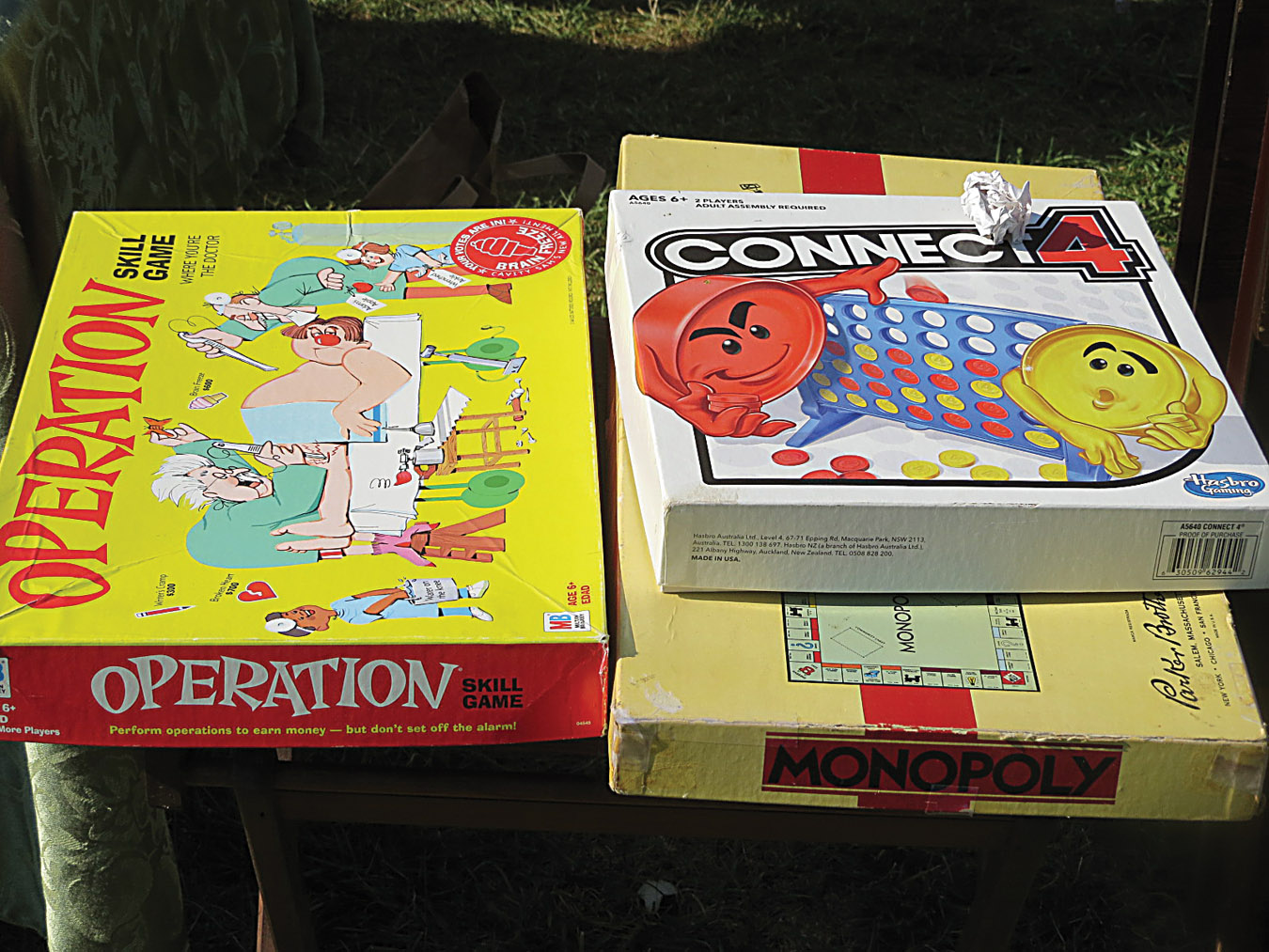
Old board games in the original box are collectible and shoppers will look them over. The older the better. Did you ever play Clue or Chutes and Ladders? Condition is everything here.
As I mentioned, one item I sell is antique fishing lures. These can command good prices but the right few people have to show up for these to move. Here’s a good place to mention that it’s very risky exclusively selling a category of product which has potential appeal to only a small percentage of visitors. I like mass-appeal items much better. To get back to fishing, contemporary fishing tackle and lures will also sell but at very low prices since this merchandise is found in abundance at flea markets. That said, good items for hunters, anglers, and other outdoor enthusiasts will get a look.
At every big flea market there will always be a few people selling what I’ll inaccurately lump together as ephemera: old paperwork like vintage post cards, stamps, coins, baseball cards, maps, prints, old books, and the like. You can sell this “soft merchandise” but you must know the category well since the buyers also will. Is there anybody still out there who doesn’t know that a Mickey Mantle rookie card can send you on a first-class worldwide trip?
As a little joke, I took an old baseball and wrote the name “Babe Ruth” on it. Tons of people picked it up and quickly left, sometimes with a sly smile to me. Finally, a foreign woman from Asia came along and started studying it carefully. We couldn’t understand each other but something must have clicked for her because she lit into a big smile and bought the ball. Did she really know who Babe Ruth was? I don’t know but I slept just fine that night. I only had a dollar on it.
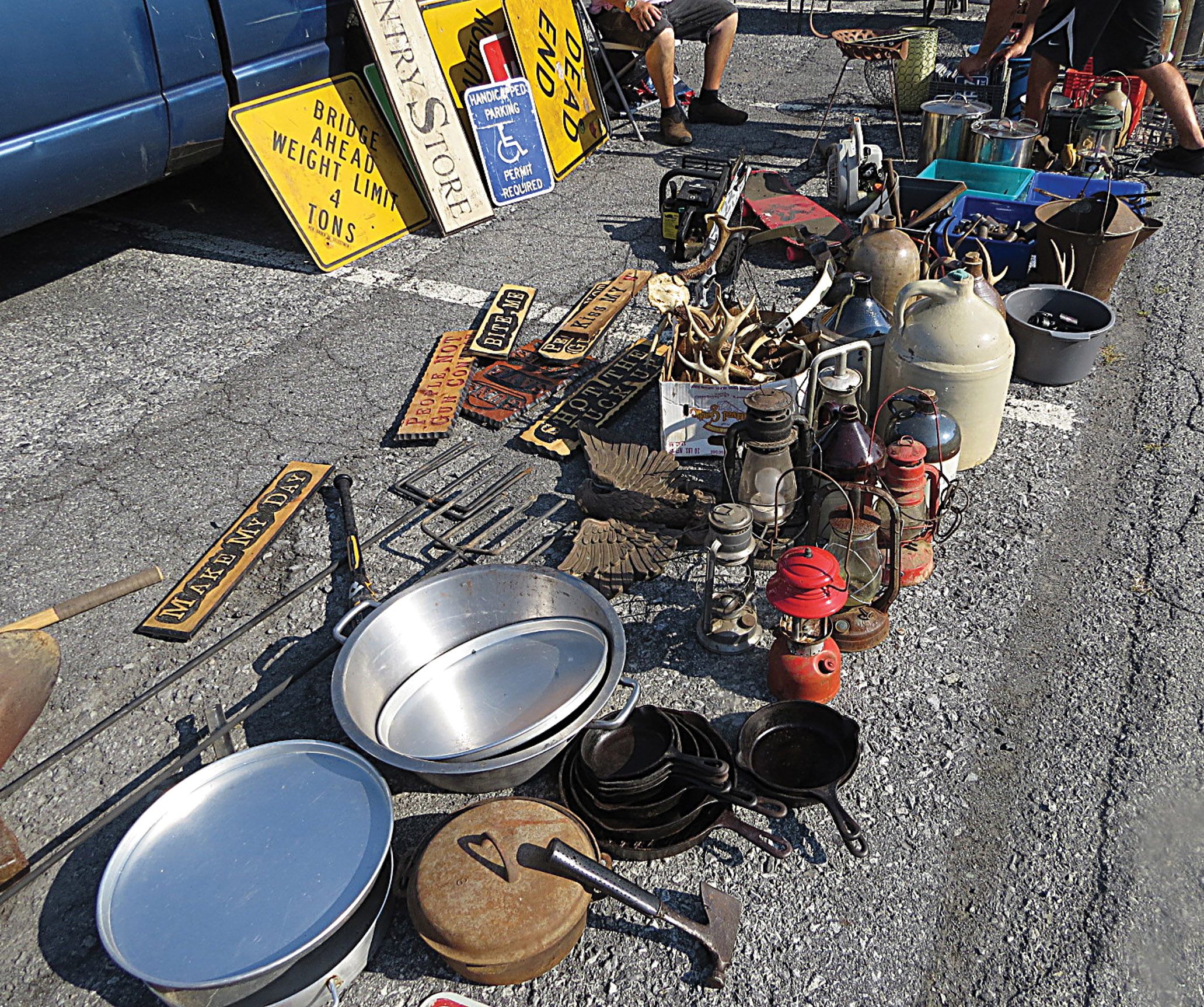
This display is a good example of what you’ll find at the better stands: some real collectibles mixed together with more contemporary and/or utilitarian items.
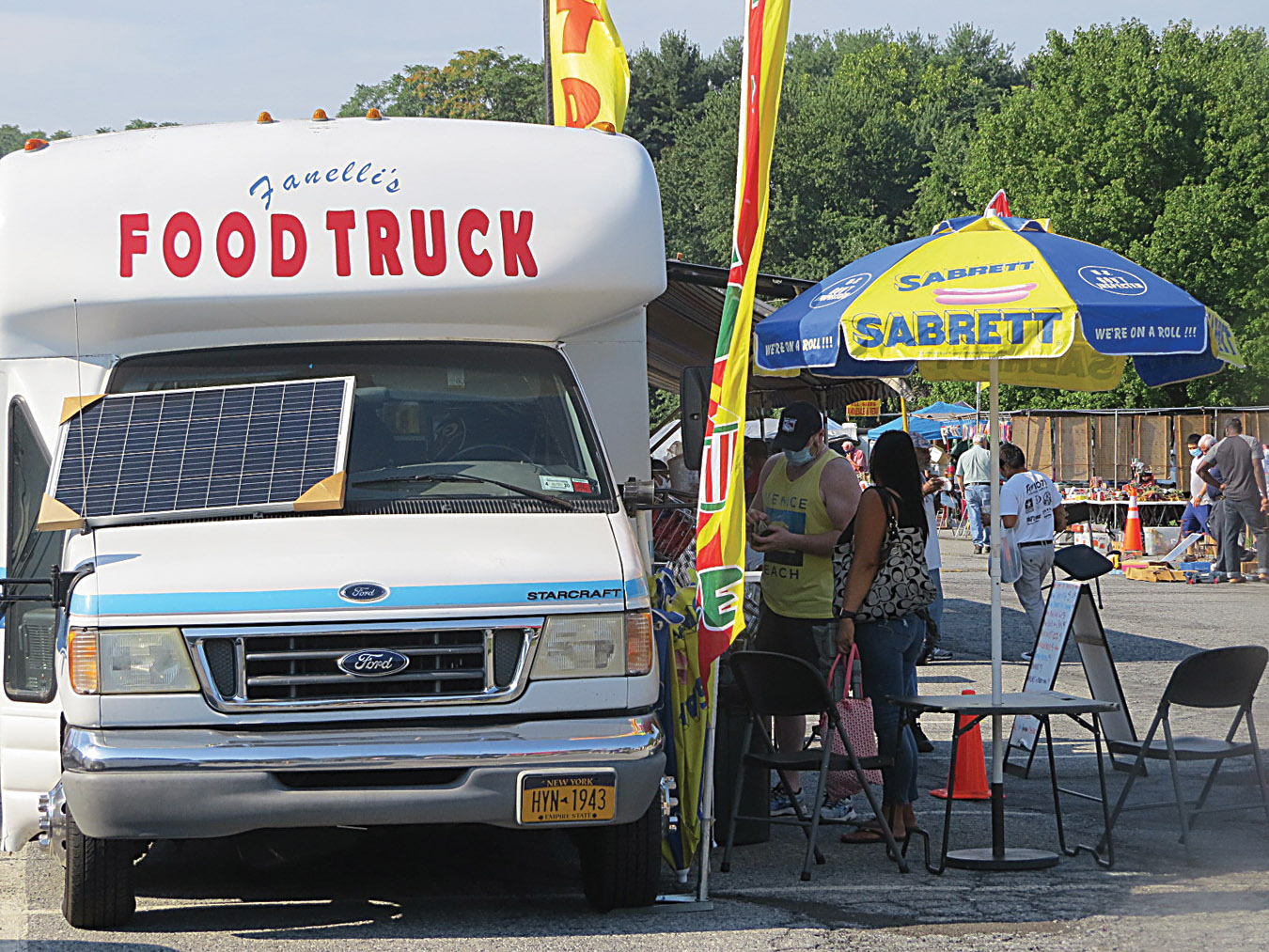
Any flea market I’ve ever been to has had at least a couple of food vendors. Experience in selling food on any platform would be extremely helpful. Also: give them what they want! You may go to heaven by selling healthy choices (which I hope you do) but you may make a stop in the poorhouse first.
I want to point out that this just scratches the surface of what you can sell. I know this for certain: there are ideas flea marketers haven’t thought of. If you can come up with some fresh idea, give it a run. Remember that word “novelty.” It looms large. I think fried dough is about the worst stuff you can possibly put into your body but there must be a lot of people who wish they were the first to think of it. There are always lines at the funnel cake wagon! And what could be more insane than the mania for Pet Rocks, Pokemon, or Spinners? You’ll never hear me say that you’ll score big by appealing to the intellectual side of the human animal.
Now just a few thoughts on where to get the goods you need to sell. With household goods you’ll start with stuff you already have. This will probably keep you from losing money even if you don’t really earn that much. (Extreme caution: don’t buy goods to resell at flea markets unless you already have a little experience in the game.) I already mentioned the guys who go out looking for used bicycles and lawnmowers put out on the curb. Don’t pick up these bulky items unless you’re mechanically inclined and have a big vehicle for hauling them around. Nonetheless, “curb shopping” is an accepted way of finding things to sell. It’s often said that you can live on what people throw out. I’m not wasteful like that, but on the other hand, I have no qualms about capitalizing on other people’s wastefulness. The other day I found a Kitchenaid mixer on the curb. It worked fine! All the attachments were in the bowl! This is a $350 item. I’ll try to get $100 for it. I already have a mixer.
Another way to obtain goods is to visit the local self-storage rental place which gives away or auctions off stuff cheaply from the bins of people who don’t keep up their rent. Another still is to visit clean-outs, when someone dies and a house is now empty. The heirs often want that house cleaned out as quickly as possible so they can cash in. A great many flea market sellers get their merchandise in this fashion. Some even charge to do the clean-out, doubling their profit. Align yourself with some local realtors who can let you know when such a scenario comes up. They have an equal interest in quickly prepping the house for sale. If you live in a rural area, any old barn is a potential gold mine of dust-collecting treasures.
Now the last category: food. I’ve been threatening to do food for years and have just not made the commitment. Not every merchandise table at a big flea market will have a line of people, but you can be certain that there will be lines at the food vendor trucks at twelve noon. It’s pure speculation on my part, but I’ll bet that 40% of the people who come browse at a flea market don’t buy anything, and of this group, half never intended to buy anything. It’s just an outing for them, a kind of spectacle. At the same time, I’ll bet that at least 70% will buy some item of food or drink when they’re at the market.
But there are key differences selling food versus selling merchandise. For one, there is a genuine outlay of money to get started. You may need a truck or wagon, though you may be able to sell behind a canopy. You may very well have to deal with some sticky government regulations; most of this red tape does not overly burden sellers of merchandise. I would encourage a foray into food selling, but only with a lot of forethought. A flea marketer who jumps into the fray to sell goods is not likely to get too badly burned. There is no such comforting prospectus for a food seller who is not also an excellent and instinctive businessman.


